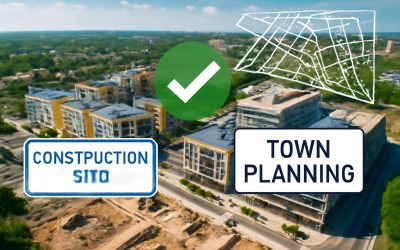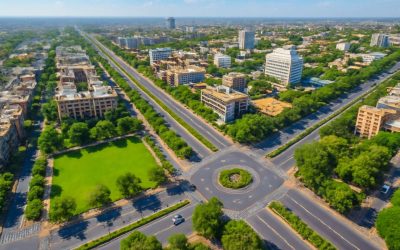
City planning is a process that enables cities to plan for the growth and development of their populations. It is an important part of any community, as it helps to keep cities safe and healthy for their residents.
The planning process typically starts with gathering data and analyzing it to determine how best to use the space available in a city. This involves studying the economy, transportation needs and environmental impacts.
Urban planning is essential to protecting the health of people living in urban areas, and it can help to create healthier communities by addressing issues such as pollution, traffic, and air and noise quality. It can also improve the quality of life in cities, and protect against climate change.
When cities are poorly planned, they promote unhealthy lifestyles, expose people to environmental stressors, and exacerbate inequities in access to resources and infrastructure. Integrated planning is vital to address these issues, and it involves stakeholders from all sectors.
It is a good idea to work with communities and empower them to identify their needs. This can be done through community outreach, which means asking people what they need and listening to their answers.
Another way to empower communities is through the use of data, which can give a better picture of how a particular issue may affect them. This information can be used to close knowledge gaps and make city plans more effective.
This can be done by using software such as CityEngine, which is a 3D modeling program that is easy to use for urban planners and allows them to create models of large areas based on real-world data or fully conceptual. It also offers rules that allow the user to quickly and easily generate different types of environments, making it a good choice for anyone looking to build their own city or for those who need to do it on the job.
There are many different types of software out there for urban planning, and choosing the right one is important. It should be simple to learn and use, and it should also have a low cost.
The design and architecture of cities has changed dramatically over time. In the 19th century, industrialization grew rapidly, and many cities became dirty and overcrowded. In response, city planners tried to separate people from industry by creating laws called zoning ordinances.
They thought this would keep people from catching diseases such as cholera, yellow fever, and typhoid. But these ills spread quickly, and the people who lived in crowded and polluted areas began to suffer.
It was not long before city planners realized that they needed to address these problems. They began to look at ways to make the city safer, more beautiful and more healthy.
Ultimately, this led to the creation of the planning profession in the United States in the late 19th century. The profession helped to protect people from a variety of problems, including air and water pollution, odors, and poor urban aesthetics.



0 Comments